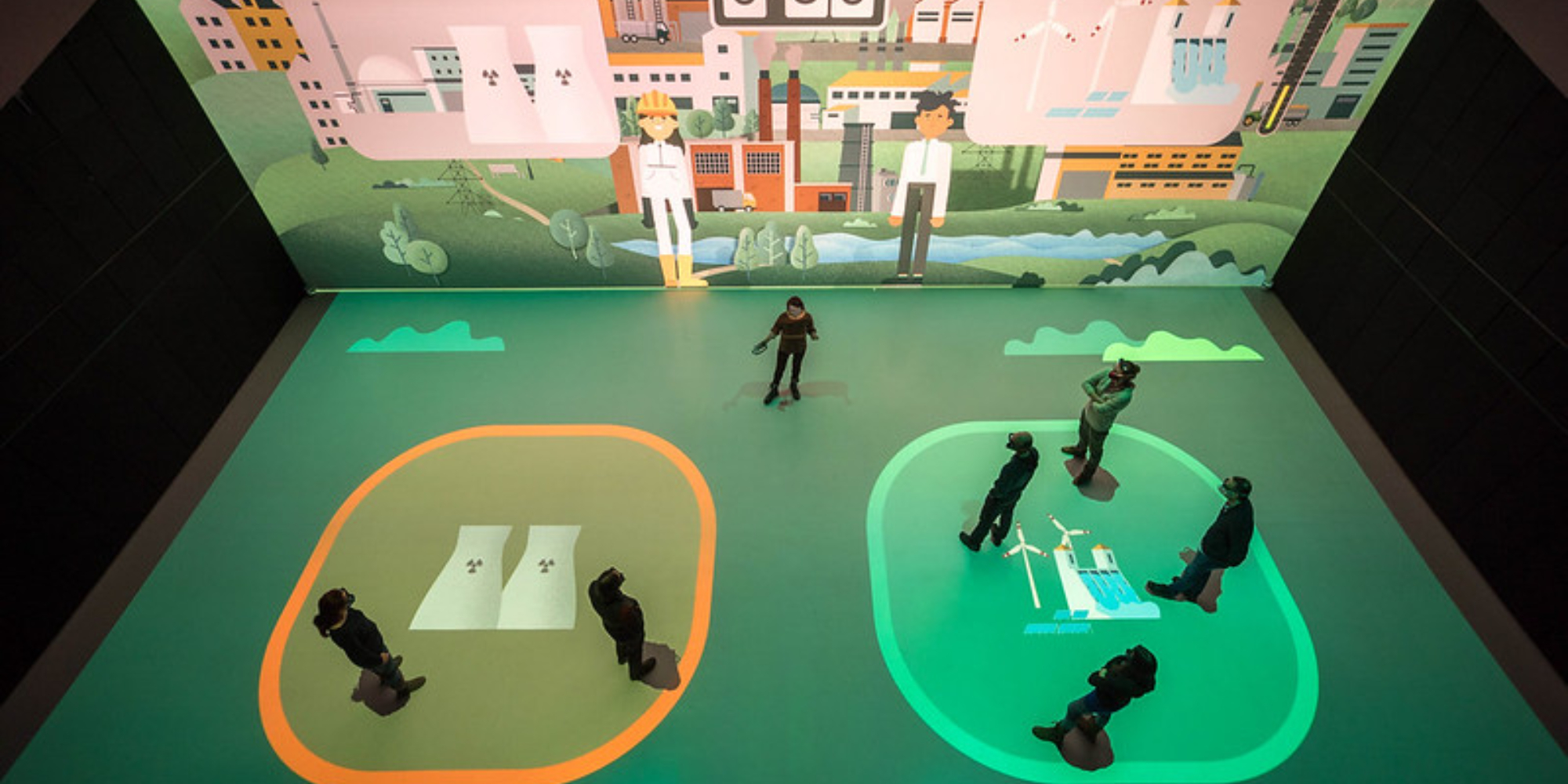First, let’s take a brief look back before embarking on a journey into the future: The history of Deep Space began with the CAVE, continued with Deep Space and Deep Space 8K, and carries on today with Deep Space EVOLUTION. All these names are associated with technical developments and innovations, adapted to the time and its technological advances, but also to the requirements of the space and its use.
Today, March 30, 2022, the Ars Electronica Futurelab team looks back on months of developing and advancing technological innovations and programs. The technical details are covered in this article. Here, at this point, we take a closer look at the new programs, which will open up exciting stories, a wide range of interaction options and an even more immersive experience for audiences. Starting today, they can be experienced during a visit to the Ars Electronica Center’s Deep Space 8K; details on presentation times, tickets and program are available here: https://ars.electronica.art/center/de/exhibitions/deepspace/
UNIVIEW: Where it all began
A not entirely inappropriate beginning for a history of evolution is UNIVIEW, a 3D visualization of the entire universe as we know it. The version now available invites visitors to spectacular journeys – be it to the planets of our solar system or the giant, space- and time-bending black hole at the center of the Milky Way. We also learn what a “habitable zone” is and why the Earth has a magnetic field. We ask ourselves how the moon was formed and why it is indispensable for terrestrial evolution. Finally, thanks to which technologies we can venture further and further into Space today and look back almost to the Big Bang is told during the tour of the ISS or the excursion to the James Webb telescope.
Virtual Anatomy: Humans at the Center
We, Homo Sapiens, are a product of this earthly evolution. “Virtual Anatomy” shows us how incredibly complex and functional our organism has developed. Measurement data from modern medicine meet special effects and open up exciting insights into the innermost parts of our body for the average consumer as well as for medical students, who can learn pathological and physiological structures without bloodshed. “Virtual Anatomy” is a multi-year cooperative project involving Prof. Dr. Franz Fellner of the Department of Radiology at Kepler University Hospital Linz, Siemens Healthineers and the Ars Electronica Futurelab.
Welcome to Planet B or the Future of the Planet
Another application developed by the Ars Electronica Futurelab is also about the future of mankind, but the subject matter is completely different: “Welcome to Planet B” is an interactive game that asks what we want to do to limit climate change and its effects. Whether energy, waste, housing, transport or agriculture – the players have to take a position and decide which way to go – for example, individual or public transport. It is never a question of right or wrong, but the consequences of each decision are shown and what the alternatives would be. Although the solutions are rarely simple, one principle is clear: the worst of all variants is to do nothing at all.
Sounding Letters and Transient: Up to Art and Much Further
The irrepressible curiosity and imagination of the human being is then evidenced by poetic and partly interactive visual worlds that test the interplay between humans and technology in ways that are as surprising as they are entertaining. An audiovisual experience created in collaboration with generative algorithms is “Transient – Impermanent Paintings” by Quayola /Seta (IT). Hyperrealistic digital brushstrokes articulate endlessly on a large-scale projection as if it were a real canvas. Each brushstroke is represented as a piano tone, creating polyphonic, synesthetic landscapes.
The potential inherent in the interplay of man and machine is also demonstrated in the 3D video “Sounding Letters” created by Raphael Elias Schaumburg-Lippe (designer and artist at the Ars Electronica Futurelab): using an AI system, Ali Nikrang (artist and researcher at the Ars Electronica Futurelab) has interpreted the first letters of “Ars Electronica Futurelab” and “Ars Electronica Center” as notes and composed a piece of music from them. The video shows Ali Nikrang performing the piece together with a piano he plays himself, accompanied by a poetic visualization by Florian Berger (developer and artist at the Ars Electronica Futurelab).
All information about Deep Space EVOLUTION as well as details about the new programs, tickets and presentation times can be found here: https://ars.electronica.art/center/de/deepspaceevolution/ We look forward to your visit!
